
Apple M1 Pro (10-CPU 14-GPU) Benchmark, Test and specs
Last updated:
The Apple M1 Pro (10-CPU 14-GPU) has 10 cores with 10 threads and is based on the 1. gen of the Apple M series series. The processor was released in Q3/2021. The Apple M1 Pro (10-CPU 14-GPU) scores 1,768 points in the Geekbench 5 single-core benchmark. In the Geekbench 5 multi-core benchmark, the result is 12,574 points.

| Name: | Apple M1 Pro (10-CPU 14-GPU) |
|---|---|
| Family: | Apple M series (23) |
| CPU group: | Apple M1 (9) |
| Architecture: | M1 |
| Segment: | Mobile |
| Generation: | 1 |
| Predecessor: | -- |
| Successor: | Apple M2 Pro (10-CPU 16-GPU) |
CPU Cores and Base Frequency
The Apple M1 Pro (10-CPU 14-GPU) has 10 CPU cores and can calculate 10 threads in parallel. The clock frequency of the Apple M1 Pro (10-CPU 14-GPU) is 0.60 GHz (3.20 GHz). The number of CPU cores greatly affects the speed of the processor and is an important performance indicator.
| CPU Cores / Threads: | 10 / 10 |
|---|---|
| Core architecture: | hybrid (big.LITTLE) |
| A-Core: | 8x Firestorm |
| B-Core: | 2x Icestorm |
| Hyperthreading / SMT: | No |
|---|---|
| Overclocking: | No |
| A-Core Frequency: | 0.60 GHz (3.20 GHz) |
| B-Core Frequency: | 0.60 GHz (2.06 GHz) |
Artificial Intelligence and Machine Learning
Processors with the support of artificial intelligence (AI) and machine learning (ML) can process many calculations, especially audio, image and video processing, much faster than classic processors. Algorithms for ML improve their performance the more data they have collected via software. ML tasks can be processed up to 10,000 times faster than with a classic processor.
| AI hardware: | Apple Neural Engine |
|---|---|
| AI specifications: | 16 Neural cores @ 11 TOPS |
Internal Graphics
The Apple M1 Pro (10-CPU 14-GPU) has integrated graphics, called iGPU for short. Specifically, the Apple M1 Pro (10-CPU 14-GPU) uses the Apple M1 Pro (14 Core), which has 1792 texture shaders and 224 execution units. The iGPU uses the system's main memory as graphics memory and sits on the processor's die.
| GPU name: | Apple M1 Pro (14 Core) |
|---|---|
| GPU frequency: | 0.39 GHz |
| GPU (Turbo): | 1.30 GHz |
| Compute units: | 224 |
| Shader: | 1792 |
| Hardware Raytracing: | No |
| Release date: | Q3/2021 |
| Max. displays: | 3 |
|---|---|
| Generation: | 1 |
| Direct X: | -- |
| Technology: | 5 nm |
| Max. GPU Memory: | 32 GB |
| Frame Generation: | No |
Hardware codec support
A photo or video codec that is accelerated in hardware can greatly accelerate the working speed of a processor and extend the battery life of notebooks or smartphones when playing videos.
| h265 / HEVC (8 bit): | Decode / Encode |
|---|---|
| h265 / HEVC (10 bit): | Decode / Encode |
| h264: | Decode / Encode |
| VP8: | Decode |
| VP9: | Decode / Encode |
| AV1: | No |
|---|---|
| AVC: | Decode |
| VC-1: | Decode |
| JPEG: | Decode / Encode |
Memory & PCIeThe processor can use up to 32 GB memory in 2 (Dual Channel) memory channels. The maximum memory bandwidth is 102.4 GB/s. The memory type as well as the amount of memory can greatly affect the speed of the system. |
|
| Memory type: | Memory bandwidth: |
|---|---|
| LPDDR5-6400 | 102.4 GB/s |
| Max. Memory: | 32 GB |
| Memory channels: | 2 (Dual Channel) |
| ECC: | No |
| PCIe: | 4.0 |
| PCIe Bandwidth: | -- |
Thermal ManagementThe thermal design power (TDP for short) of the processor is 45 W. The TDP specifies the necessary cooling solution that is required to cool the processor sufficiently. The TDP usually gives a rough idea of the actual power consumption of the CPU. |
|
|---|---|
| TDP (PL1 / PBP): | 45 W |
| TDP (PL2): | -- |
| TDP up: | -- |
| TDP down: | -- |
| Tjunction max.: | -- |
Technical details
The Apple M1 Pro (10-CPU 14-GPU) is made in 5 nm. The smaller the manufacturing process of a CPU, the more modern and energy-efficient it is. Overall, the processor has 28.00 MB cache. A large cache can greatly speed up the processor's speed in some cases such as games.
| Technology: | 5 nm |
|---|---|
| Chip design: | Chiplet |
| Socket: | -- |
| L2-Cache: | 28.00 MB |
| L3-Cache: | -- |
| AES-NI: | Yes |
| Operating systems: | macOS |
| Virtualization: | Apple Virtualization Framework |
|---|---|
| Instruction set (ISA): | Armv8.5-A (64 bit) |
| ISA extensions: | Rosetta 2 x86-Emulation |
| Release date: | Q3/2021 |
| Release price: | -- |
| Part Number: | APL 1103 |
| Documents: | -- |
Rate this processor
Benchmark results

The benchmark results for the Apple M1 Pro (10-CPU 14-GPU) have been carefully checked by us. We only publish benchmark results that have been created by us or that have been submitted by a visitor and then checked by a team member. All results are based on and fullfill our benchmark guidelines.
Cinebench 2024 (Single-Core)
The Cinebench 2024 benchmark is based on the Redshift rendering engine, which is also used in Maxon's 3D program Cinema 4D. The benchmark runs are each 10 minutes long to test whether the processor is limited by its heat generation.

|
Apple M1 Ultra (64-GPU)
20C 20T @ 3.20 GHz |
||
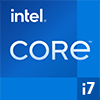
|
Intel Core i7-12700K
12C 20T @ 5.00 GHz |
||

|
Intel Core i7-12700KF
12C 20T @ 5.00 GHz |
||
|
|
Apple M1 Pro (10-CPU 14-GPU)
10C 10T @ 3.20 GHz |
||

|
Apple M1 Pro (8-CPU)
8C 8T @ 3.20 GHz |
||

|
Apple M1 Pro (10-CPU 16-GPU)
10C 10T @ 3.20 GHz |
||

|
Intel Core i7-13850HX
20C 28T @ 5.30 GHz |
||
Cinebench 2024 (Multi-Core)
The Multi-Core test of the Cinebench 2024 benchmark uses all cpu cores to render using the Redshift rendering engine, which is also used in Maxons Cinema 4D. The benchmark run is 10 minutes long to test whether the processor is limited by its heat generation.

|
Intel Core i7-11700F
8C 16T @ 4.90 GHz |
||

|
Intel Core i7-11700K
8C 16T @ 5.00 GHz |
||

|
Intel Core i7-11700KF
8C 16T @ 5.00 GHz |
||
|
|
Apple M1 Pro (10-CPU 14-GPU)
10C 10T @ 3.20 GHz |
||

|
Apple M1 Pro (10-CPU 16-GPU)
10C 10T @ 3.20 GHz |
||

|
Apple M1 Max (24-GPU)
10C 10T @ 3.20 GHz |
||

|
Apple M1 Max (32-GPU)
10C 10T @ 3.20 GHz |
||
Cinebench R23 (Single-Core)
Cinebench R23 is the successor of Cinebench R20 and is also based on the Cinema 4 Suite. Cinema 4 is a worldwide used software to create 3D forms. The single-core test only uses one CPU core, the amount of cores or hyperthreading ability doesn't count.

|
AMD Ryzen 7 PRO 5750G
8C 16T @ 4.60 GHz |
||

|
Intel Core i7-1185G7
4C 8T @ 4.80 GHz |
||
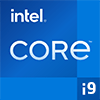
|
Intel Core i9-11900T
8C 16T @ 4.90 GHz |
||
|
|
Apple M1 Pro (10-CPU 14-GPU)
10C 10T @ 3.20 GHz |
||

|
Apple M1 Ultra (48-GPU)
20C 20T @ 3.20 GHz |
||

|
Apple M1 Ultra (64-GPU)
20C 20T @ 3.20 GHz |
||

|
Apple M1 Max (24-GPU)
10C 10T @ 3.20 GHz |
||
Cinebench R23 (Multi-Core)
Cinebench R23 is the successor of Cinebench R20 and is also based on the Cinema 4 Suite. Cinema 4 is a worldwide used software to create 3D forms. The multi-core test involves all CPU cores and taks a big advantage of hyperthreading.
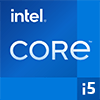
|
Intel Core i5-12400
6C 12T @ 4.00 GHz |
||

|
Apple M1 Max (24-GPU)
10C 10T @ 3.20 GHz |
||

|
Apple M1 Max (32-GPU)
10C 10T @ 3.20 GHz |
||
|
|
Apple M1 Pro (10-CPU 14-GPU)
10C 10T @ 3.20 GHz |
||

|
Apple M1 Pro (10-CPU 16-GPU)
10C 10T @ 3.20 GHz |
||

|
AMD Ryzen 7 3700X
8C 16T @ 4.00 GHz |
||

|
Intel Core i5-12490F
6C 12T @ 4.20 GHz |
||
Geekbench 5, 64bit (Single-Core)
Geekbench 5 is a cross plattform benchmark that heavily uses the systems memory. A fast memory will push the result a lot. The single-core test only uses one CPU core, the amount of cores or hyperthreading ability doesn't count.

|
Intel Core i5-12490F
6C 12T @ 4.60 GHz |
||
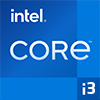
|
Intel Core i3-13100
4C 8T @ 4.50 GHz |
||

|
Intel Core i3-13100F
4C 8T @ 4.50 GHz |
||
|
|
Apple M1 Pro (10-CPU 14-GPU)
10C 10T @ 3.20 GHz |
||

|
Apple M1 Pro (8-CPU)
8C 8T @ 3.20 GHz |
||

|
Apple M1 Pro (10-CPU 16-GPU)
10C 10T @ 3.20 GHz |
||

|
Intel Core i5-12600HX
12C 16T @ 4.60 GHz |
||
Geekbench 5, 64bit (Multi-Core)
Geekbench 5 is a cross plattform benchmark that heavily uses the systems memory. A fast memory will push the result a lot. The multi-core test involves all CPU cores and taks a big advantage of hyperthreading.

|
Intel Core i9-12900H
14C 20T @ 3.80 GHz |
||

|
Intel Core i9-12900HK
14C 20T @ 3.80 GHz |
||

|
Intel Xeon Gold 6130T
16C 32T @ 2.60 GHz |
||
|
|
Apple M1 Pro (10-CPU 14-GPU)
10C 10T @ 3.20 GHz |
||

|
Apple M1 Pro (10-CPU 16-GPU)
10C 10T @ 3.20 GHz |
||

|
Intel Core i5-14400F
10C 16T @ 2.50 GHz |
||

|
Intel Core i5-14400
10C 16T @ 2.50 GHz |
||
Geekbench 6 (Single-Core)
Geekbench 6 is a benchmark for modern computers, notebooks and smartphones. What is new is an optimized utilization of newer CPU architectures, e.g. based on the big.LITTLE concept and combining CPU cores of different sizes. The single-core benchmark only evaluates the performance of the fastest CPU core, the number of CPU cores in a processor is irrelevant here.

|
AMD Ryzen 5 7540U
6C 12T @ 4.90 GHz |
||

|
AMD Ryzen 5 7545U
6C 12T @ 4.90 GHz |
||

|
AMD Ryzen 5 8540U
6C 12T @ 4.90 GHz |
||
|
|
Apple M1 Pro (10-CPU 14-GPU)
10C 10T @ 3.20 GHz |
||

|
Apple M1 Ultra (48-GPU)
20C 20T @ 3.20 GHz |
||

|
Apple M1 Ultra (64-GPU)
20C 20T @ 3.20 GHz |
||

|
Apple M1 Max (24-GPU)
10C 10T @ 3.20 GHz |
||
Geekbench 6 (Multi-Core)
Geekbench 6 is a benchmark for modern computers, notebooks and smartphones. What is new is an optimized utilization of newer CPU architectures, e.g. based on the big.LITTLE concept and combining CPU cores of different sizes. The multi-core benchmark evaluates the performance of all of the processor's CPU cores. Virtual thread improvements such as AMD SMT or Intel's Hyper-Threading have a positive impact on the benchmark result.

|
Apple M1 Max (24-GPU)
10C 10T @ 3.20 GHz |
||

|
Apple M1 Max (32-GPU)
10C 10T @ 3.20 GHz |
||

|
Intel Core i9-12900TE
16C 24T @ 3.00 GHz |
||
|
|
Apple M1 Pro (10-CPU 14-GPU)
10C 10T @ 3.20 GHz |
||

|
Apple M1 Pro (10-CPU 16-GPU)
10C 10T @ 3.20 GHz |
||

|
Intel Core i7-13620H
10C 16T @ 4.40 GHz |
||

|
Intel Xeon W-3265M
24C 48T @ 3.60 GHz |
||
iGPU - FP32 Performance (Single-precision GFLOPS)
The theoretical computing performance of the internal graphics unit of the processor with simple accuracy (32 bit) in GFLOPS. GFLOPS indicates how many billion floating point operations the iGPU can perform per second.

|
Apple M3 Pro (11-CPU 14-GPU)
Apple M3 Pro (14 Core) @ 1.40 GHz |
||
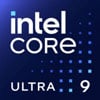
|
Intel Core Ultra 9 185H
Intel Iris Xe 8 Core Graphics 128 EUs (Meteor Lake) @ 2.35 GHz |
||

|
Qualcomm Snapdragon X Elite (X1E-84-100)
Qualcomm Adreno X Elite/Plus @ 1.20 GHzNot verified |
||
|
|
Apple M1 Pro (10-CPU 14-GPU)
Apple M1 Pro (14 Core) @ 1.30 GHz |
||

|
Apple M1 Pro (8-CPU)
Apple M1 Pro (14 Core) @ 1.30 GHz |
||
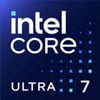
|
Intel Core Ultra 7 165HL
Intel Iris Xe 8 Core Graphics 128 EUs (Meteor Lake) @ 2.30 GHz |
||

|
Intel Core Ultra 7 165H
Intel Iris Xe 8 Core Graphics 128 EUs (Meteor Lake) @ 2.30 GHz |
||
Blender 3.1 Benchmark
In the Blender Benchmark 3.1, the scenes "monster", "junkshop" and "classroom" are rendered and the time required by the system is measured. In our benchmark we test the CPU and not the graphics card. Blender 3.1 was presented as a standalone version in March 2022.

|
Intel Core i7-11700K
8C 16T @ 4.50 GHz |
||

|
Intel Core i7-1280P
14C 20T @ 3.00 GHz |
||

|
AMD Ryzen Threadripper 1920X
12C 24T @ 3.60 GHz |
||
|
|
Apple M1 Pro (10-CPU 14-GPU)
10C 10T @ 3.20 GHz |
||

|
Apple M1 Max (24-GPU)
10C 10T @ 3.20 GHz |
||

|
Apple M1 Max (32-GPU)
10C 10T @ 3.20 GHz |
||

|
Apple M1 Pro (10-CPU 16-GPU)
10C 10T @ 3.20 GHz |
||
CPU performance per watt (efficiency)
Efficiency of the processor under full load in the Cinebench R23 (multi-core) benchmark. The benchmark result is divided by the average energy required (CPU package power in watts). The higher the value, the more efficient the CPU is under full load.

|
AMD Ryzen 7 PRO 8845HS
15,930 CB R23 MC @ 55 W |
||

|
AMD Ryzen 9 7950X3D
38,581 CB R23 MC @ 136 W |
||

|
AMD Ryzen Threadripper 7980X
98,322 CB R23 MC @ 349 W |
||
|
|
Apple M1 Pro (10-CPU 14-GPU)
12,390 CB R23 MC @ 45 W |
||

|
Apple M1 Pro (10-CPU 16-GPU)
12,390 CB R23 MC @ 45 W |
||

|
Apple M1 Max (32-GPU)
12,402 CB R23 MC @ 45 W |
||

|
Apple M1 Max (24-GPU)
12,402 CB R23 MC @ 45 W |
||
Performance for Artificial Intelligence (AI) and Machine Learning (ML)
Processors with the support of artificial intelligence (AI) and machine learning (ML) can process many calculations, especially audio, image and video processing, much faster than classic processors. The performance is given in the number (trillions) of arithmetic operations per second (TOPS).

|
Qualcomm Snapdragon 778G
8C 8T @ 2.40 GHz |
||

|
Qualcomm Snapdragon 778G+
8C 8T @ 2.50 GHz |
||

|
Qualcomm Snapdragon 780G
8C 8T @ 2.40 GHz |
||
|
|
Apple M1 Pro (10-CPU 14-GPU)
10C 10T @ 0.60 GHz |
||

|
Apple M1 (7-GPU)
8C 8T @ 0.60 GHz |
||

|
Apple M1 Max (24-GPU)
10C 10T @ 0.60 GHz |
||

|
Apple M1 Max (32-GPU)
10C 10T @ 0.60 GHz |
||
Benchmarks

Cinebench 2024 (SC)
272 entries
272 entries

Cinebench 2024 (MC)
271 entries
271 entries

Cinebench R23 (SC)
586 entries
586 entries

Cinebench R23 (MC)
565 entries
565 entries

Geekbench 5 (SC)
2,488 entries
2,488 entries

Geekbench 5 (MC)
2,461 entries
2,461 entries

Geekbench 6 (SC)
1,755 entries
1,755 entries

Geekbench 6 (MC)
1,703 entries
1,703 entries

FP32 SP (iGPU)
2,042 entries
2,042 entries

Blender 3.1 Benchmark
212 entries
212 entries

CPU performance per watt (efficiency)
109 entries
109 entries

AI / ML Performance
119 entries
119 entries
News and articles for the Apple M1 Pro (10-CPU 14-GPU)

Apple M2 Pro with more CPU cores and production in 3 nm ?
Posted by Stefan on 2022-06-28
After Apple surprisingly presented the normal Apple M2 processor as the first successor to the Apple M1 already in June 2022, the Apple M2 Pro and the Apple M2 Max may follow in autumn. The difference in performance compared to the basic version could be even greater this time and range from 25 to 40 percent.
In this article we describe how Apple could realize this and why the price should also go up.
In this article we describe how Apple could realize this and why the price should also go up.
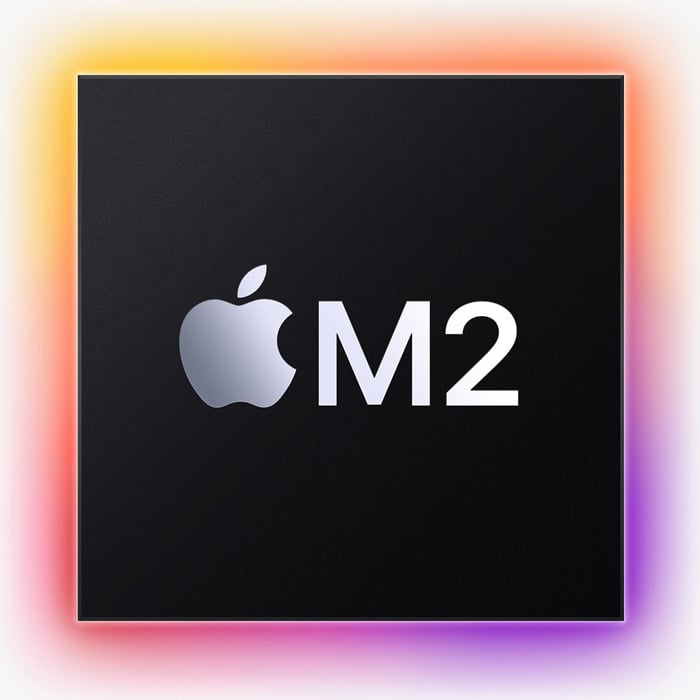
Apple M2 vs Apple M1 - What are the differences?
Posted by Stefan on 2022-06-09
During WWDC 2022 on June 6th, 2022 Apple surprisingly presented its new Apple M2 processor. This will initially be installed in a completely revised Apple MacBook Air with 13.6 inches, a even thinner form factor and new colors. Apple also updated the already known (old) Apple MacBook Pro 13.3 with touch bar.
Many leakers had counted on Apple not presenting its new second-generation M processor until the fall. But things turned out differently. And there is very likely a reason for that: the improvements in the Apple M2 are limited compared to the predecessor.
Many leakers had counted on Apple not presenting its new second-generation M processor until the fall. But things turned out differently. And there is very likely a reason for that: the improvements in the Apple M2 are limited compared to the predecessor.
Description of the processor
The Apple M1 Pro (with 10 CPU cores and 14 GPU cores) is an enlarged version of the regular Apple M1 processor with more CPU and GPU cores for even more computing power. Apple introduced the Apple M1 Pro and Apple M1 Max processors for the professional MacBook series. Apple also uses the processors in the more professional mac mini and mac Studio series.The Apple M1 Pro (with 10 CPU cores and 14 GPU cores) has a total of 10 CPU cores, which are made up of 8 large P-cores (Apple Firestorm) and two smaller E-cores (Apple Icestorm). As with its other A and M processors, Apple also uses a hybrid core design for the CPU cores. The larger P-cores provide the largest share of the overall performance, with the E-cores being considered very economical and used for background tasks. But they can also be used together with the P-cores.
The clock frequency of the M1 Pro is very low at 0.6 GHz and is typical for modern ARM processors. The Apple M1 Pro can dynamically increase the clock frequency of the P-cores up to 3.2 GHz, while the E-cores can operate at a maximum of 2.06 GHz.
In addition to the normal CPU cores, the Apple M1 Pro (with 10 CPU cores and 14 GPU cores) has the Apple Neural Engine, which has an AI computing power of 11 TOPS and greatly accelerates calculations in image and video processing can.
The integrated graphics of the Apple M1 Pro (with 10 CPU cores and 14 GPU cores) has 224 execution units and almost 1800 shaders. The FP32 computing power of the graphics is at a very good level at 4.58 TFLOPS and is currently only beaten by the larger expansion levels from Apple itself when it comes to iGPUs. Theoretically, the graphics would be fast enough for some computer games, but game support on Apples macOS operating system is still very limited.
Popular comparisons
back to index




